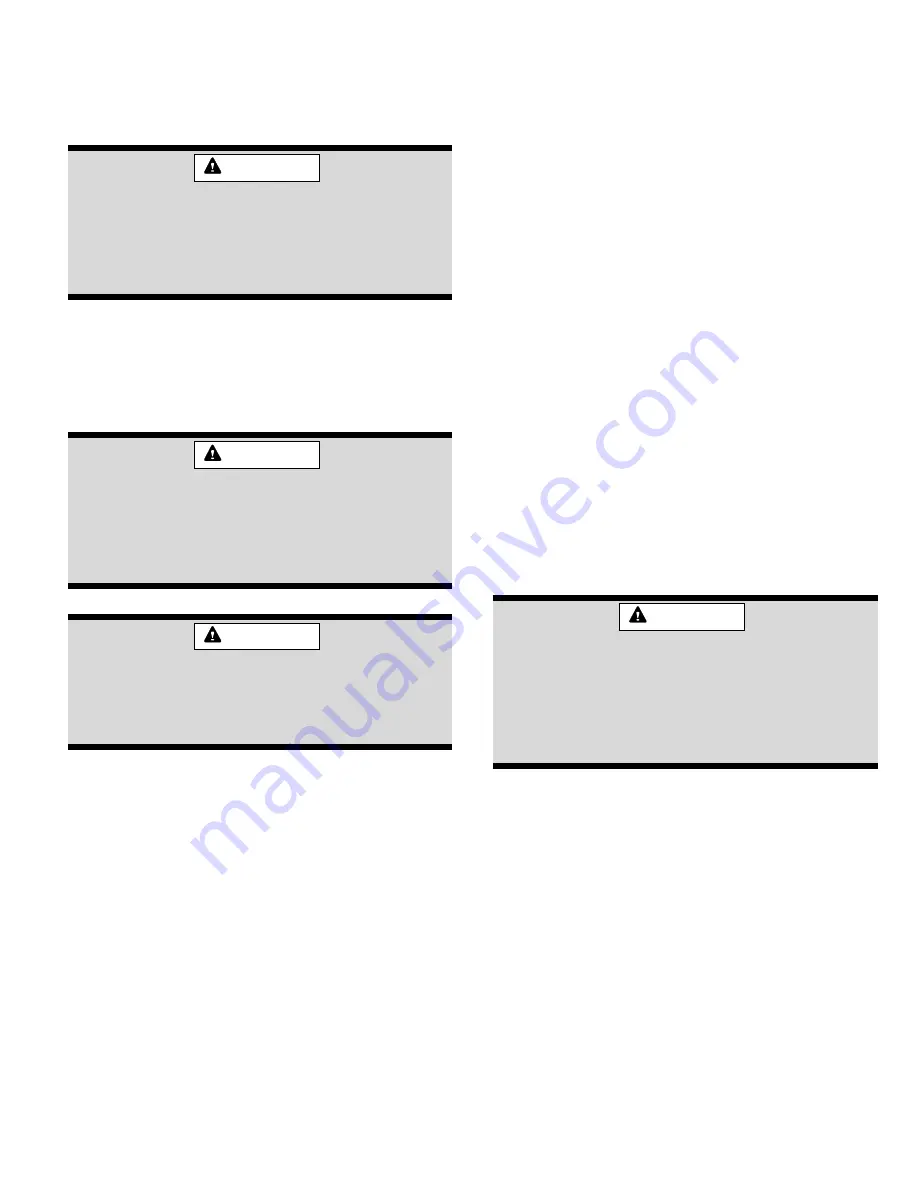
# 504,910M
Page 9
Leak Testing
After the line set has been connected to the indoor and
outdoor units, the line set connections and indoor unit
must be checked for leaks.
Using an Electronic Leak Detector
1. Connect the high pressure hose of the manifold
gauge set to the suction valve service port. (Normally
the high pressure hose is connected to the liquid line
port; however, connecting it to the suction ports helps
to protect the manifold gauge set from damage
caused by high pressure.)
2. With both manifold valves closed, connect the cylin-
der of R410A refrigerant. Open the valve on the
R410A cylinder (vapor only).
3. Open the high pressure side of the manifold to allow
R410A into the line set and indoor unit. Weigh in a
trace amount of R410A. (A trace amount is a maxi-
mum of 2 oz. of refrigerant or 3 lbs. pressure.) Close
the valve on the R410A cylinder and the valve on the
high pressure side of the manifold gauge set. Discon-
nect the R410A cylinder.
The ball valve is equipped with a service port with a
factory-installed Schrader valve. A service port cap
protects the Schrader valve from contamination and
serves as the primary seal.
4. Connect a cylinder of nitrogen with a pressure regulat-
ing valve to the center port of the manifold gauge set.
When using high pressure gas such as nitrogen
for this purpose, be sure to use a regulator that
can control the pressure down to 1 or 2 psig.
5. Adjust nitrogen pressure to 150 psig. Open the valve
on the high side of the manifold gauge set to pressur-
ize the line set and the indoor coil.
6. After a short period of time, open a refrigerant port to
make sure that an adequate amount of refrigerant has
been added for detection (refrigerant requirements will
vary with lengths). Check all joints for leaks. Purge
nitrogen and R410A mixture. Correct any leaks and
recheck.
IMPORTANT: The leak detector must be capable of
sensing HFC refrigerant.
Evacuation
Evacuating the system of non-condensables is critical for
proper operation of the unit. Non-condensables are
defined as any gas that will not condense under tempera-
tures and pressures present during operation of an air
conditioning system. Non-condensables and water vapor
combine with refrigerant to produce substances that
corrode copper piping and compressor parts.
Use a thermocouple or thermistor electronic vacuum
gauge that is calibrated in microns. Use an instrument that
reads from 50 microns to at least 10,000 microns.
Compliant scroll compressors (or any refrigerant
compressor) should never be used to evacuate a
refrigeration or air conditioning system.
1. Connect the manifold gauge set to the service valve
ports as follows:
•
Low pressure gauge to suction line service valve
•
High pressure gauge to liquid line service valve
2. Connect micron gauge.
3. Connect the vacuum pump (with vacuum gauge) to
the center port of the manifold gauge set.
Refrigerant can be harmful if inhaled. Refrig-
erant must always be used and recovered
responsibly. Incorrect or irresponsible use of
refrigerant can result in personal injury or
death.
WARNING
Never use oxygen to pressurize refrigeration
or air conditioning systems. Oxygen will ex-
plode on contact with oil and could cause
personal injury or death.
WARNING
Do not use a compressor to evacuate a system.
Avoid deep vacuum operation. Extremely low
vacuums can cause internal arcing and com-
pressor failure. Danger of equipment damage.
Damage caused by deep vacuum operation will
void warranty.
WARNING
Do not attempt to backseat the valve. Attempts
to backseat the valve will cause snap ring to
explode from valve body under pressure of
refrigerant. Personal injury and unit damage
will result.
WARNING


































